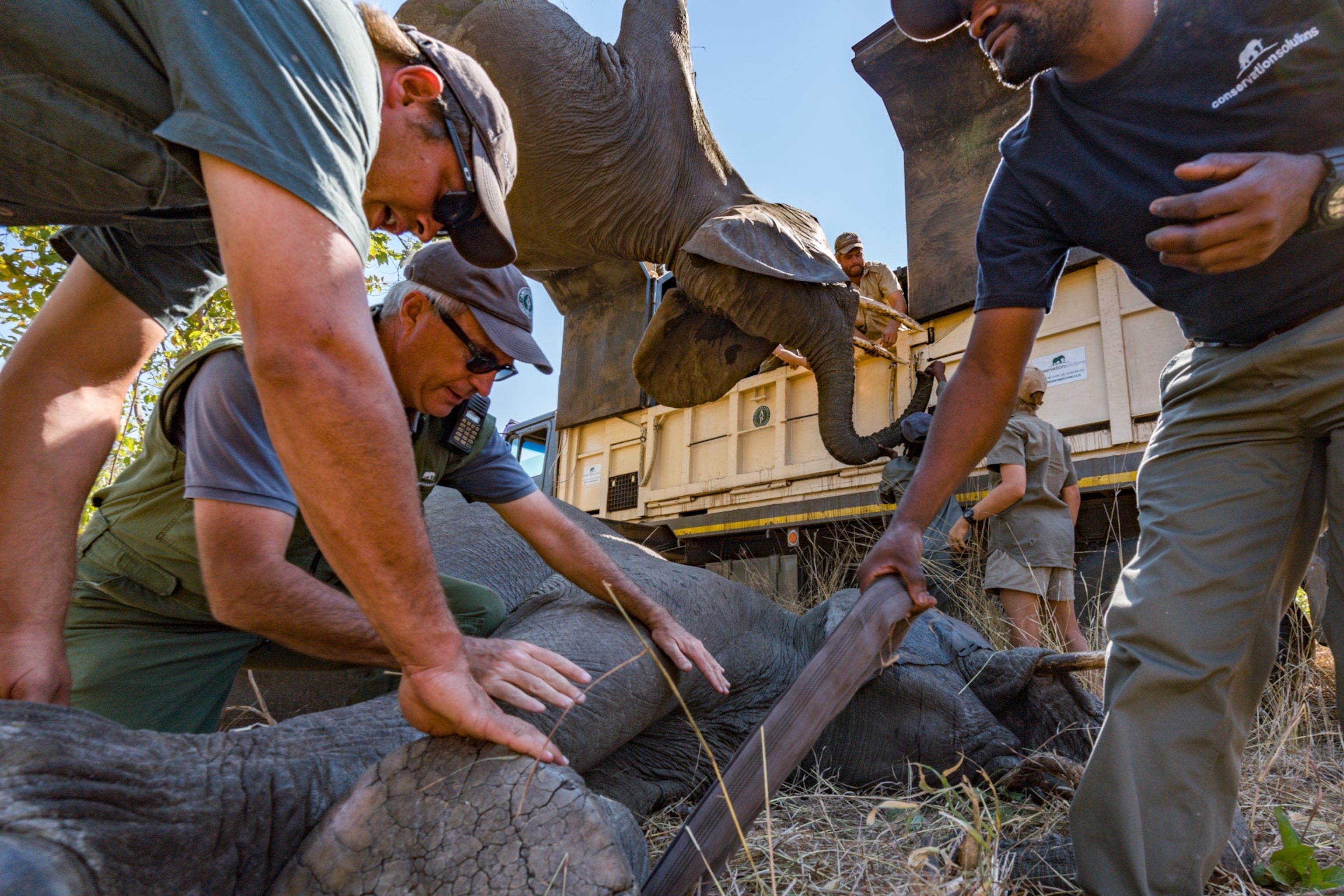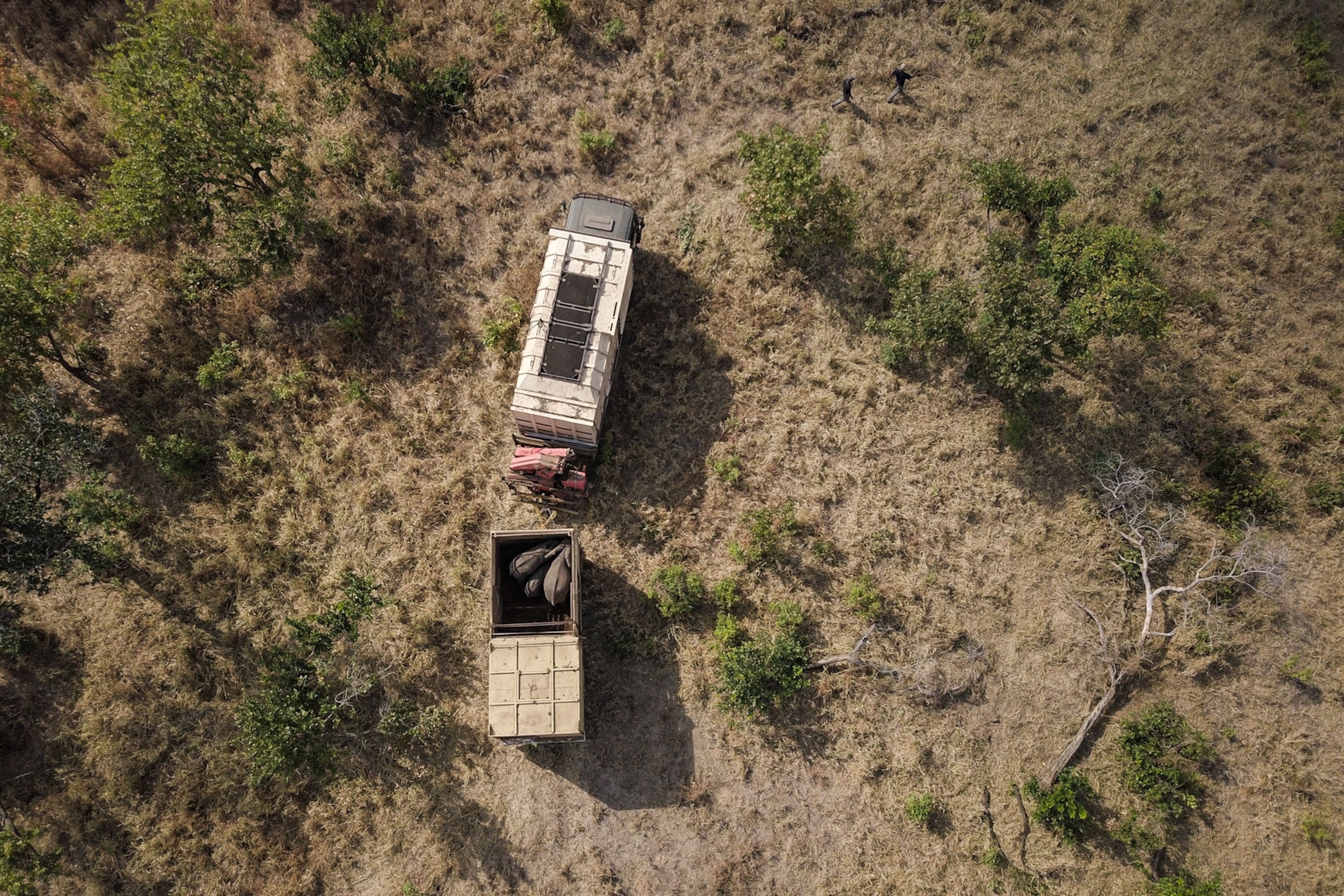See What It Takes to Move 500 Elephants
A massive effort to pack up the pachyderms and relocate them to safety is at last complete.
Four minutes—that's the average amount of time wildlife officials have from when a tranquilizer dart punctures an elephant's thick skin to when the anesthetizing drug takes effect.
This short window is the most critical time period if you want to re-locate a six-ton elephant over 150 miles.
In late July, wildlife managers in Malawi finished a two-year project that involved moving 520 elephants from Liwonde National Park and Majete Wildlife Reserve to their new home in Nkhotakota Wildlife Reserve. The hope is that the transplanted pachyderms will help solve conservation problems in both their original homes and their new locale.
In Liwonde and Majete, booming elephant populations were leading to an increase in human and wildlife conflict. Elephants that encroach on human settlements can damage local crops and livestock, which can devastate a small farm’s livelihood. Many of the animals that were transported out of these parks had small, bullet-shaped holes in their ears.
By contrast, the population in Nkhotakota had been decimated by poaching. In the large park, a population of more than 1,500 elephants had declined to fewer than 100 in the past 20 years.
Moving so many elephants between the parks, though, was no small feat. The herds could not simply walk to their new home because the region is densely packed and posed a risk to Malawi's agribusiness.
Veterinarians and conservationists from African Parks, a non-profit group that manages parks and protected areas, carried out the efforts. The teams moved close family groups together (and one at a time). Since elephants are social animals, this reduces stress and increases chances for success in their new environment.
A Mammoth Move
On the day of a move, the teams set out early in search of a herd via helicopter. Once they spotted a family unit, they radioed other groups on the ground to stand by while the elephants were tranquilized from above.
Each elephant was darted with a synthetic opioid that's ten thousand times more potent than morphine. One drop of it could kill a human within seconds. However, this potent drug takes around four minutes to knock out an elephant, and during the intervening time, an elephant is still capable of covering a large expanse.
The ground crews stayed nearby to ensure that a darted elephant didn't fall in water, hit its head against a tree, or fall on its chest, a position that could crush the hefty animal's lungs.
"After four minutes the elephants stop running and they all go down around the same time and ideally in the same place—but it happens very quickly and we have to be prepared to rush in and make sure everyone is okay,” says Andrea Heydlauff, the chief marketing officer for African Parks. She was present for many of these transfers and assisted in the effort.
After an elephant fully lost consciousness and was laid in the correct position, officials propped a twig into the opening of the trunk to ensure the airways remained open and flipped its ears forward to protect its eyes from the bright Malawi sun.
Specially made cranes then hoisted the darted elephants into a crate, lifting them by ropes tied around the bottoms of their legs. Once in the crate, they were given an antidote to wake them from the anesthesia. The elephants stayed awake for the remainder of their 12-hour journey north, but Heydlauff notes that they were subdued from the tranquilizer, "kind of like if you had taken a Xanax," she says.
What's Next?
Now that the massive move is complete, African Parks officials hope Nkhotakota will become one of Malawi’s leading elephant wildlife reserves and help improve the region’s employment and tourism opportunities.
Of the poaching that took place in Malawi, most was done by small local groups using rudimentary weapons and snares, but still with considerable impact. Once African Parks assumed management of Nkhotakota in 2015, they recruited and trained rangers to carry out law enforcement to secure the park, stop poaching, and prepare for the translocated elephants.
Across Africa, though, saving elephants continues to be a daunting task.
Ivory fetches a high price on the black market—in some regions, a single kilogram can fetch a thousand dollars. A survey conducted in 2016 found that 140,000 elephants have been killed for their tusks in the past decade alone.
And in regions hit hard by civil strife, elephant poaching has been especially tough to combat. For instance, Garamba National Park in the war-torn Democratic Republic of the Congo, also managed by African Parks, has seen its elephant populations decline from upward of 22,000 to just 1,300 in the past 50 years where it continues to be plagued by heavily militarized poachers.
African Parks manages a total of 11 national parks and protected areas on behalf of governments throughout the continent, and despite the staggering threats still facing African elephants, they’re hopeful they can help other populations rebound.
“We know what’s killing these elephants," says Heydlauff. "We can stop it at the source.”















